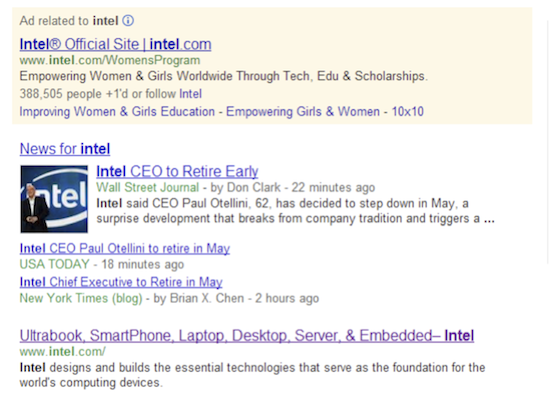Whether a company should bid on their own brand name to fortify their search position is a subject of fierce debate. There are reasonable arguments both for and against the issue.
This article is going to shy away from arguing for one “correct” answer. Instead, we’ll explore some of the key considerations and try to equip you with the information needed to make the right decision for yourorganization.
Advantages of Branded SEM:
- More Control: Bidding on branded terms give the advertiser much more control over the visitor’s journey. This is true for any paid campaign and includes both the pages they land on and the route they take through your website.
- Updates: It’s generally much faster and easier to get updates done on specific landing pages versus having the same updates accomplished on internal site pages – and especially the homepage. There can be countless reasons for this including challenges with approval processes, SEO issues, or even CRM issues. As a result, getting updated information (e.g., specials, bad PR responses, new campaign creative) can typically be communicated much faster through SEM.
- Testing: Branded SEM lets you serve variations of websites and landing pages without sacrificing as many conversions as you would via none branded SEM. Why? Branded traffic is less likely to allow tested conversion elements to detract them from making a purchase or filling out a form. They already know your name and are far less likely to leave because of the element your testing isn’t appealing. This agility allows you to test, adapt, and optimize very quickly with alternative messaging and offerings in both the ad copy and on the landing pages.
- Brand Protection: Branded SEM allows you to reduce the possibility of a competitor or another site capturing the visitor and creating a negative brand experience (BBB, Ripoff Report), or going to a competitor (competitive branded bidding and review sites).
- Branded Affordability and CPC: Not bidding on branded makes it financially easier for competitors to do so. Your bid would have an amazing quality score and CTR making it cost that much more for a competitor to try and nudge their way up in position. Branded keywords are typically very cheap as well. A little investment can yield a large benefit.
- SERP Visibility: Simply taking up additional space on Google means more visibility, awareness, control, and traffic.
- Improve Quality Score: Branded search campaigns naturally have a higher quality score, which has a positive impact on your overall account’s quality score.

- Heat Mapping: Heat map studies display where a person’s eyes navigate to when they first visit a website. It’s almost always the top left corner of the site. This is exactly where PPC ads are displayed. It’s quite possible that your homepage isn’t the first listing in a search for your brand name. Maps, news items, or a competitor’s paid listing could all appear before your own organic listing. Branded SEM ensures that you control this important SERP real estate.
Disadvantages of Branded SEM
- Cost: This is the number one disadvantage, and the only one that’s needed. Many will argue that branded searches will garner an organic visit regardless of PPC. If this is the case then it could be argued that the cost of branded SEM is a waste of valuable marketing capital.
- Opportunity Cost: Can the organization utilize the marketing dollars from branded SEM in a more profitable initiative?
So, there are many more advantages than disadvantages. However, marketing dollars can easily trump all of the reasons to run a branded SEM campaign.
No matter which scenario is best for your organization, let’s look at a couple dos and don’ts that can be applied across the board.
Definitely Do

- Active PR: When you have a PR situation, specifically negative PR, you want to be able to capture the as much of the visible portion of Google’s homepage as possible and present the desired company info and positioning. The screenshot above shows an example of how news sources can be the top organic position. If you’re facing a difficult situation – take control!
- Watch the Competition: If your competitors are actively bidding on your branded terms, you absolutely should be as well. This is an active threat to your market share that must be mitigated. There is no doubt that a large portion of your branded traffic will click on your competitor’s ads.
Definitely Don’t
- Analytical Evidence: Run tests against the effectiveness of branded paid traffic and compare the profitability against not paying for the traffic. The results almost always show the branded traffic paying for the expense of purchasing it. There are numerous ways to do this; perhaps the easiest is to simply turn your branded SEM campaigns off for a period of time and measure the impact on your overall profitability.
You should be monitoring the following metrics:
- Traffic: Over that time period, did your branded traffic decrease relative to historical data? If so, you know you’re missing traffic by not running branded PPC.
- Conversions: Did your organic branded conversions increase? If not, you know you’re missing conversions from branded PPC.
Other Sources of Data
There are a few noteworthy case studies and sources of data scattered around the web on this topic. Some of them are dated, but still worth taking a look at.

According to a Think With Google study focusing on B2B sites:
- 12 percent of conversions come from paid branded terms.
- Branded keywords have 2X higher conversion rate.
Here are some other sources:


